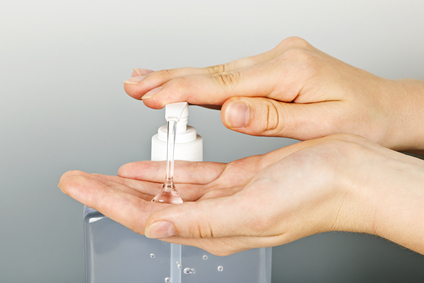 I’m sorry to say that most people just don’t know this. I didn’t either, despite the fact that it was published by the Environmental Working Group (EWG) in 2005, the year my older son was born.
I’m sorry to say that most people just don’t know this. I didn’t either, despite the fact that it was published by the Environmental Working Group (EWG) in 2005, the year my older son was born.
In their landmark report, Body Burden: The Pollution in Newborns, the EWG pointed out that an AVERAGE of 200 toxic chemicals were in the cordblood of newborns, meaning that there is only one place these could have come from: the mother.
They found a total of over 280 carcinogens, heavy metals, endocrine disruptors, plastics, neurologically damaging pesticides and other nasties in these babies.
I remember telling our former pediatrician about the shocking levels of heavy metals that I had discovered in myself and my sons. She said, “But you don’t live in a toxic waste dump!”
The point is, I don’t think you have to anymore to be this toxic because we’re all being exposed to these toxicants on a daily basis, then unknowingly passing them onto our children, whose toxin load will accumulate over time, and they’ll pass it on to their children.
It’s one of the main reasons we’re seeing such an epidemic of chronic illnesses like cancer and autoimmune diseases as well as developmental delays and disorders such as autism, ADHD, PDD-NOS and sensory processing disorder in children these days.
The good news is that people can be recovered from these conditions. I’ve recovered my own sons from sensory processing disorder, asthma, eczema and acid reflux.
Here’s the trailer from the well-thought-out documentary, “Unacceptable Levels“. It’s 2 minutes long and worth it for you to get a glimpse of what’s going on.

 Great. Not only is triclosan, the drug in many anti-bacterial hand sanitizers and soaps, an endocrine disruptor (it damages your thyroid and hormonal system) and a pesticide (it kills your good gut flora), but now
Great. Not only is triclosan, the drug in many anti-bacterial hand sanitizers and soaps, an endocrine disruptor (it damages your thyroid and hormonal system) and a pesticide (it kills your good gut flora), but now  Learn how toxins and lifestyle factors contribute to autism, PDD-NOS, ADHD, sensory processing disorder, hypotonia, retained reflexes and developmental delays.
Learn how toxins and lifestyle factors contribute to autism, PDD-NOS, ADHD, sensory processing disorder, hypotonia, retained reflexes and developmental delays. Most obstetricians do not warn their pregnant patients about toxins like pesticides in food, like phthalates or endocrine disruptors in consumer products, or like heavy metals in the environment that could harm their unborn child.
Most obstetricians do not warn their pregnant patients about toxins like pesticides in food, like phthalates or endocrine disruptors in consumer products, or like heavy metals in the environment that could harm their unborn child. Chlorine in tap and pool water has been linked to a rising number of people with food allergies. Chlorine is an endocrine disruptor that also kills good gut flora.
Chlorine in tap and pool water has been linked to a rising number of people with food allergies. Chlorine is an endocrine disruptor that also kills good gut flora.  Fluoride suppresses the thyroid by displacing iodine. To help support optimal function of your thyroid, limit fluoride exposure and add iodine into your diet.
Fluoride suppresses the thyroid by displacing iodine. To help support optimal function of your thyroid, limit fluoride exposure and add iodine into your diet.  A new study strengthens the tie between breast cancer and toxic exposures to plastics and carcinogens in the workplace.
A new study strengthens the tie between breast cancer and toxic exposures to plastics and carcinogens in the workplace. It’s common these days for girls to enter puberty before discovering “Are You There God? It’s Me, Margaret”.
It’s common these days for girls to enter puberty before discovering “Are You There God? It’s Me, Margaret”. Brominated flame retardants are neurotoxic and are linked to neurodevelopmental disorders like autism, ADHD and SPD.
Brominated flame retardants are neurotoxic and are linked to neurodevelopmental disorders like autism, ADHD and SPD.

